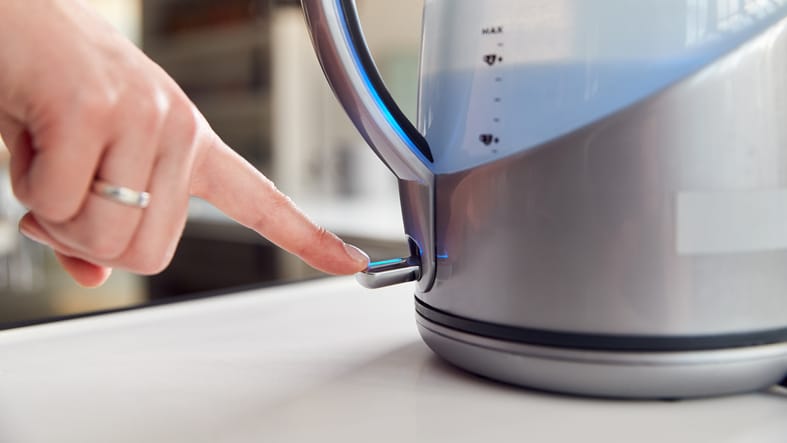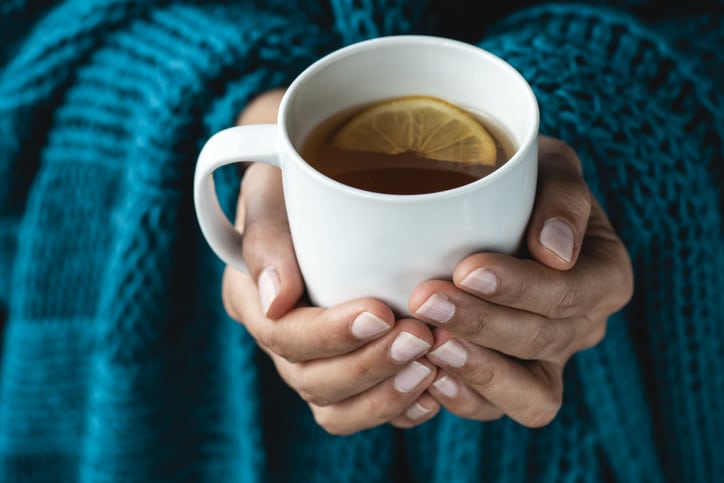How to make the perfect cup of tea – Australian style!
Tea is more than just a drink. Tea is taking the time to pause and enjoy. It’s a calming ritual that can be a circuit breaker for stress, or simply the perfect way to start the morning or wind down after a busy day. Let’s face it, as tea lovers, we don’t need much of an excuse to ‘pop the kettle on’ and settle in for a nice brew.
The origins of tea can be traced back to China and North Burma as far back as 2700 BC and tea as we know it today, was introduced into Europe by the Dutch in the 1600s. In Great Britain, Charles II’s Portuguese wife, Catherine of Braganza, introduced the fashionable new beverage to the British aristocracy in the 1660s and thus, the ritual of afternoon tea in the UK was born. Soon after, the first dedicated tea shop, Thomas Twinings of London, opened in 1706.
Due to high import taxes, tea in Britain was seen as a luxury item and only consumed by the upper classes until the late 18th century when prices began to fall. Soon, households all over the country were able to partake in a refreshing cup of tea. It became ‘inherently British’, almost patriotic to drink tea over the earlier desired hot drinks of coffee and chocolate.
With the European colonisation of Australia throughout the late 1700s, the Brits brought their new favourite beverage with them – yes, there was tea on board the First Fleet. Indigenous Australians however were already drinking a form of tea from plants we often refer to as ‘Tea Trees’.
In 1883, Howard Bushell opened Australia’s first tea shop and we were growing our very own tea in Queensland by 1884. Something that wasn’t able to be achieved in Great Britain’s climate.
But enough about the history…
Let’s dig in and find out how the perfect cup of tea is made – you may be surprised about a few mistakes you could be making!
Now, for the perfect cup, we’re going to assume you’re preparing your tea in a mug with a good old tea bag. Yes some enthusiasts may argue that a proper teapot and tea leaves are the only way to go, but we believe that a glorious brew can be yielded from a simple mug paired with a humble tea bag – if done right.
Step 1 – Use only cold, fresh and if possible, filtered water, and start with an empty kettle each time
Many of us, when in a rush, or sometimes just being impatient, might turn on the hot tap to draw out water that’s already up to 50 degrees celsius – this is a BIG mistake! Heated water contains far more minerals and other impurities that are gained through the heating process. Most of these minerals and impurities won’t ‘boil off’ as they’re heavier than water and while in no way harmful, they will affect the flavour of your tea. We insist on this one, keep it cold and fresh.
If you don’t have access to filtered water, most fresh, cold tap water in Australia is perfectly fine to use for your cup of tea.
It’s also very important to remove any stagnant water that’s already sitting in the kettle. Oxygenated water improves the quality of tea, so water that’s been sitting at the bottom of your kettle lacks the oxygen of freshly poured water from the tap.

Please don’t tip your stagnant water down the drain though, if cold, pour onto a pot plant or even outside onto the garden. If the kettle water is still hot, or even warm, decant into another container and wait for it to cool down before watering your thirsty plants.
Expert tip – some regions in Australia are prone to ‘hard water’ where limescale can build up on your kettle over months of use. If you notice limescale build up, be sure to use a suitable descaler regularly to keep your kettle running at its best.
Step 2 – Once the kettle has boiled, wait!
We know how tempting it is, especially standing over the bubbling kettle, waiting for what seems like an age, to hear the ‘click’ of the switch telling us the kettle has boiled. Once the click occurs, however, we need to wait a little longer.
The ideal temperature to start infusing a standard English Breakfast or regular black tea, is between 96 and 98 degrees celsius. So for most kettles, it’s good to wait around 30 seconds, just to bring the temperature a few degrees lower before pouring it into your mug.
Step 3 – Pop your tea bag into your mug, pour in the water and once again, wait!
For us, the sound of a kettle pouring hot water into your favourite mug is a mini meditation moment. Knowing that in a few minutes, it’ll be you and your perfect cup of tea – everything else can wait. But before you drink, you need to let your tea infuse into the water in your mug for at least 3 minutes, preferably 4.
Use this time to select a biscuit (but more on this later), prepare a comfy chair or even decant any leftover water in the kettle for your next brew. In no time you’ll be settling in with your perfect cup of tea.
Any infusion or permeating time of less than 3 minutes doesn’t allow the tea leaves in the bag to permeate their full flavours throughout the water. On another note, at 96 degrees, we also need to give the water a chance to cool a little more as well so you won’t scald your mouth.
It’s really not that long to wait. Your average commercial break on TV is usually 3 to 4 minutes so we know you can do it – as tempting as it is to go in for your tea a little earlier.
Step 4 – WARNING, THIS ONE’S CONTROVERSIAL – don’t jiggle, don’t squeeze!
We all remember that 90s add, you know, the one about ‘jiggling’ your tea with close ups of hands shaking the tea bag vigorously up, down and all around – well don’t!
The 3 to 4 minutes of infusion will take care of the ‘jiggle’ process and simply deems it not necessary. After the infusion period is finished, just lift the tea bag up and out of the mug letting a few drips dribble into your mug, then pop it into the bin.
And yes, you read right in step 4’s heading, DON’T SQUEEZE YOUR TEA BAG INTO YOUR CUP – this makes the tea bitter. We sincerely understand that this will be a controversial step, but we guarantee this will change your tea for the better. Don’t take our word for it though, give it a try. We promise that you’ll never go back to the dreaded ‘squeeze method’ as we like to call it.
Step 5 – Personal taste – the milk, the sugar, the biccy
Now’s the time to add your milk (if you drink tea with milk) as well as sugar to taste. We recommend using raw sugar (commonly known as demerara sugar for any UK readers) as opposed to white sugar for a more natural taste if adding any sugar.
If you like to sweeten your tea but are looking to steer clear of using sugar, our favourite option is to use a slice of lemon. To try this natural sweetener, cut a lemon in half and then cut a slice and add to your tea. To bring out the ‘lemony’ flavours we recommend using a teaspoon to push the lemon around the bottom of the mug for a few moments to let the sweet flavours permeate through your tea. Another great natural sweetener is honey. Simply add a teaspoon (or to taste) to your cup and enjoy another healthier and sweeter option.

Another polarising decision to make when consuming a cup of tea is whether or not to enjoy a biscuit on the side. At Springwood Sports Club, our team is divided on this one. Some think the addition of a sweet biscuit takes away from the flavours of the tea and if snacking, prefer a piece of toast or maybe a crumpet with butter. The majority however, love a biscuit alongside their tea with most enjoying a good biccy dunk.
A Scotch Finger seems to be the favourite choice for a biscuit addition and we have heard of, ‘ah-hem’, unconfirmed reports of some team members using these biscuits as straws! Don’t believe us – give it a go. For our overseas readers, a Scotch Finger biscuit is a delicious sweet shortbread biscuit that comes in a pair that can be ‘snapped’ down the centre creating a thin, easy dunking biscuit (or straw) for your tea.
However you like to personalise your tea experience, the one agreement we can all come to is that while drinking, you need to sit, relax and savour – make it meditative. Stop thinking for just a moment, and concentrate on the refreshing sips of your favourite tea. Take the time out to concentrate on the flavours and of enjoy a break from any stresses, worries, concerns or chores that are on your list – you deserve it.
If you’re out and about Here at Springwood Sports Club, the team at Gather can make the perfect cup of tea just for you. We serve a delicious range of T2 teas with old favourite flavours such as English Breakfast and Blue Mountains Black as well as herbal blends including Peppermint, Pomegranate and Japanese Sencha green tea.

